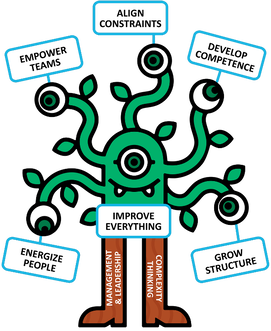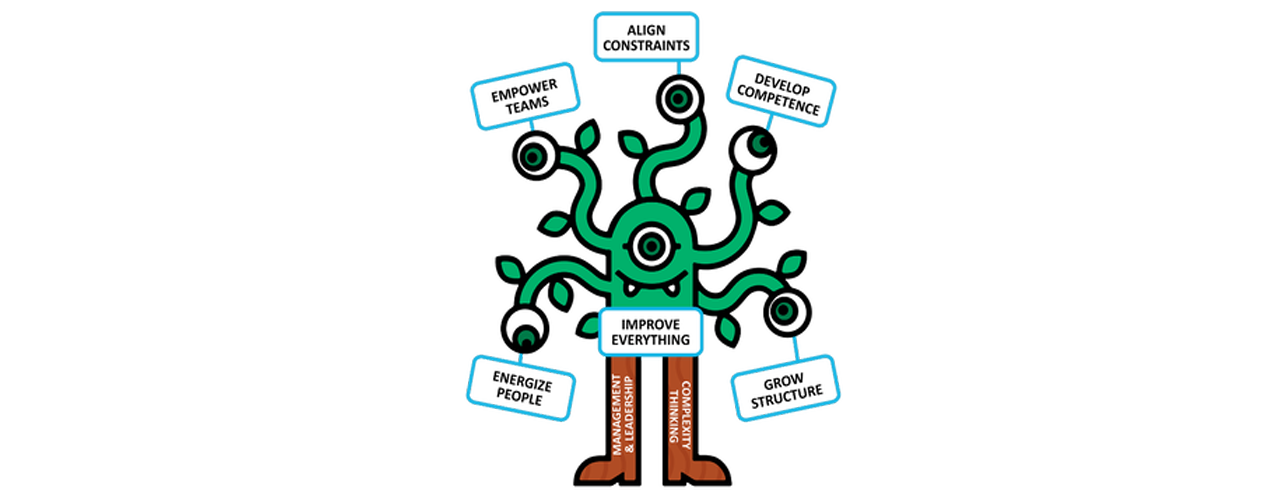
I don’t claim that i am an expert on this subject and still there is a long curve of learning involved as my career grows in to new roles. What i am sharing here are some of my observations, notes references etc related to agile leadership and how well an organization should adopt them for survival. Let’s examine some favorite ideas and concepts around agile leadership.
Success Criteria
In my experience, there are at least five criteria for successful agile transformations. Lasting organizational change happens:
- When there are leadership and guidance, not command & control.
- When there is alignment across the organization instead of the pursuit of local optimization efforts or personal agendas.
- When the collaboration of all participants beyond hierarchies is the norm, not an exception.
- When we acknowledge that management principles of the 19th century are unsuited to solve complex problems of the 21st century.
- When managers become servant leaders.
The following focus on the main concepts related to agile leadership: from servant leadership to the agile mindset to creating a learning organization. The lists are not supposed to be comprehensive but provide the interested reader with a starting point for further research.
1. Servant Leadership
Servant leadership is a suitable approach to dealing with complexity. Complexity — the unknown unknowns — determines decision-making processes and is characterized by:
- More unpredictability than predictability.
- Emergent answers.
- Many competing ideas.
- Cause and effect can only be determined in retrospect.
Servant leadership is characterized by:
- Service to others.
- Promotion of community.
- Creation of a shared vision.
- A holistic approach to work.
- A shared decision-making process.
2. Intent-based Leadership
The principles of intent-based leadership according to David Marquet are as follows:
- Create leaders, not followers.
- Resist the urge to resolve problems of your people.
- Take deliberate action.
- Learn everywhere at any time.
- Specify goals, not methods.
- Don’t empower, emancipate.
3. Agile Mindset
The ‘agile mindset’ discussion seems to be centered around five areas: complexity and planning, delivering value, self-organization, fostering collaboration, and cross-functionality of teams:
- Mindset, Complexity, and Planning
— The definition of mindset: “The established set of attitudes held by someone.”
— The complexity challenge: - The scientific management methodology of Federick Taylor does not apply to“creative work.”
- Problem-solving in a complex environment cannot be achieved with “more” planning.
- The future in the complex or chaotic domain cannot be predicted.
- Hence different approaches need to be employed when dealing with creative solutions in unchartered territory, for example, Lean.
- Focus on Delivering Value
— Continuous value delivery to customers; outcome over output.
— Continuous learning & applying empiricism: - Deming: PDCA cycle.
- Empiricism: Transparency, inspection, adaptation.
- Iterative, incremental.
- Accepting that failure is more than an option but inevitable.
- Willingness to adapt to change.
- Self-organization
– Teams can best decide how to accomplish work and achieve the goal.
— Teams outperform individuals.
— Team building is a crucial success factor: The team wins, the team fails.
— Optimize for flow not utilization, and move from push to flow.
— The importance of values: courage, commitment, focus, openness, respect - Fostering Collaboration
— Creating psychological safety and equal speaking opportunity.
— Respect for individuals.
— Inclusion and diversity.
— Core Protocols: Opt-in, opt-out, law of 2 feet — creative work requires voluntary participation.
— Prime directive: stop protecting the organization by assuming people come to the office to “rip you off.”
— Give people a voice, provide an opportunity to be heard.
- Cross Functional Teams
— End-to-end (value) delivery capability of teams.
— The autonomous pursuit of customer value balanced with accountability.
— Abandoning functional silos in favor of focusing on delivering value.
— Avoidance of local optimization.
— A cornerstone on the path to achieving business agility.
4. Creating a Learning Organization
Peter Senge is a Senior Lecturer in Leadership and Sustainability at the MIT Sloan School of Management and coined the term ‘learning organization’ in his book ‘The Fifth Discipline:’
- “The only sustainable competitive advantage is an organization’s ability to learn faster than the competition.”
- “People working together at their best. It’s a continuous, relentless process.”
- There are two mindsets that can infiltrate an organization: control and learning.
These are the characteristics of a learning organization according to Peter Senge:
- System thinking: assessing businesses as a system of bounded objects.
- Personal mastery: the commitment of an individual to the process of learning.
- Mental models: assumptions and generalizations held by individuals and organizations.
- Shared vision: Creating a collective identity to provide focus and energy for learning.
- Team learning: The accumulation of individual learning.
Harvard Business School professor David A. Garvin defines a learning organization as follows:
- “A learning organization is an organization skilled at creating, acquiring, and transferring knowledge, and at modifying its behavior to reflect new knowledge and insights.”
- New ideas, insights or moments of creativity are necessary to trigger organizational change. They are not sufficient, though to create a learning organization. The changes to the way work are accomplished need to follow suit.
Conclusion
We can aggregate and condense the concepts and principles into a comparison of the traditional management style and agile leadership:
| Traditional Management | Agile Leadership |
| Predictive, long term planning | Provision of vision, strategy and direction |
| Control of work, task assignment | Fostering self organization |
| Maximize utilization and capacity | Supporting teams by removing what is impeding them |
| The go-to problem fixer for subordinates | Let those closest to the problem figure out a solution |
| Motivating others by extrinsic incentives (bonuses, titles, etc) | Motivating others by enabling autonomy, mastery and purpose |
| Information flows up the hierarchy (reports, meetings) | Management moves to where the information is, for example by participation in Sprint Reviews |

